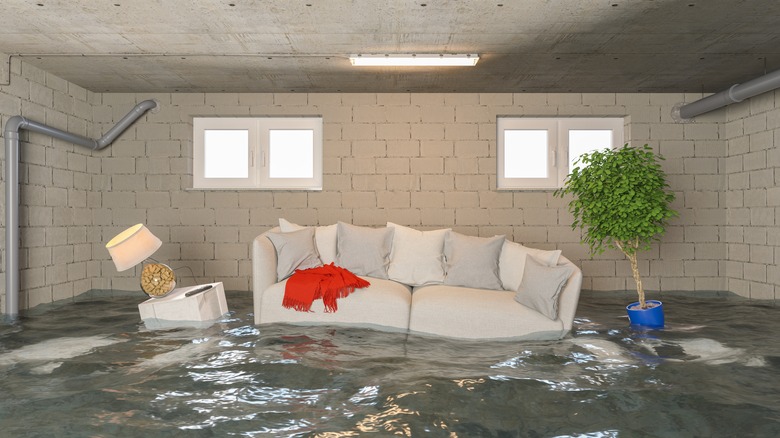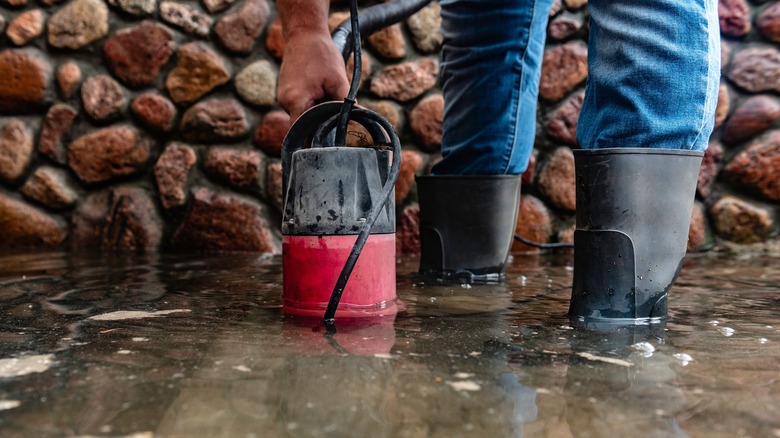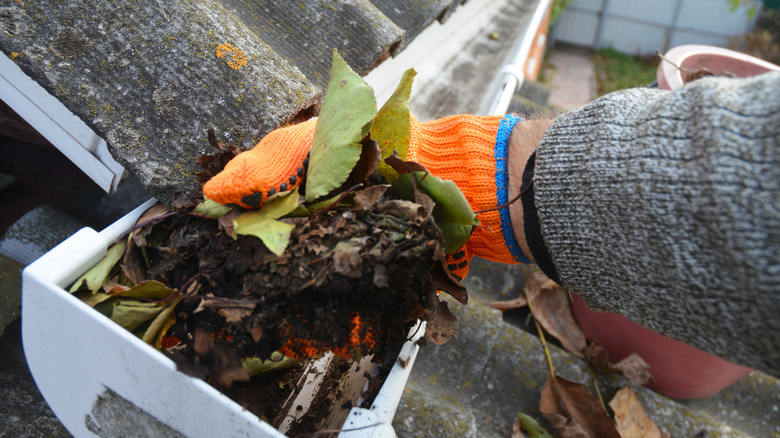Garage Water Damage: The Right Way To Clean And Prevent Flooding
We may receive a commission on purchases made from links.
When the heavens open up and rain comes pouring down, we tend to see our homes as safe havens. But it's quite the horror when this very sanctuary gets breached and your garage turns into a makeshift swimming pool. This unwelcome surprise could even stem from sudden plumbing failure and every second counts. However, all is not lost and you've got a chance to take back control with the right steps for cleaning a flooded garage — from pumping out standing water and sorting through anything water-damaged, followed up by thorough cleanup and disinfection.
Garage water damage is no small occurrence. It can wreak havoc on your valuables (including furniture) and, of course, your peace of mind. And it's not just the immediate mess — water can find its way into cracks in the floor, setting the stage for expensive structural repairs and mold. Let's also not forget the extra layer of urgency electrical hazards add to the already dire situation. Quick, decisive action not only mitigates the immediate damage but also primes your garage for a smoother recovery.
However, what comes after cleaning your garage is just as important. Overlook the underlying causes of garage flood, and you might as well set a reminder for the next one. You've got to be proactive, with measures including smart design adjustments in your garage setup. And by staying on top of maintenance, you can transform your house from a flood-prone liability into a resilient and flood-proof sanctuary.
How to clean a garage floor after a flood
Following a garage flood, your initial call to action must zero in on safety. Immediately cut off electrical power to the area to negate potential electric shock. Protective gear, including gloves and boots, will defend against health hazards lurking in the floodwater. Should the water still be making its way in, identify and possibly fix the source — for plumbing issues, this might boil down to shutting off the main water valve. And if you catch the water before it spreads further? Barricading its path with a product like the Quick Dam 10 ft. Flood Barrier, available on Amazon for $24.98, is a smart move.
Next, deploy a wet-dry vacuum or submersible pump powered from an outside source to suck up the standing water. If contemplating hiring equipment, The Home Depot, for instance, offers a 12-gallon wet/dry vacuum for $18 per four hours. Next, belongings should be discarded or salvaged (cue repairing water-damaged furniture) based on damage severity. Now, shovel up the sludge, hose down the remnants, then cleanse and disinfect vigorously. Tough spots may demand the muscle of a bleach solution, but first, confirm its suitability for your garage surfaces.
For the grand finale, whip out dehumidifiers and fans to whisk away moisture, and if weather permits, keep windows and doors ajar for optimal air circulation. The drying could take several days, so be patient. Don't skip the essential step of hiring a professional to fix any flood-compromised electrical system.
How to prevent water from flooding your garage
The first line of defense against garage floods is remedying the sources of water intrusion. Your gutters and downspouts, when clogged or misaligned system, could be funneling water straight into your garage. Regular cleaning and proper positioning to direct water away from the garage foundation are crucial steps. Don't forget about leaks from your plumbing; immediate resolution is necessary to stop water wastage. And if your roof is acting less like a shield and more like a sieve (read damaged), better get a roof repair expert on the line.
Turning your attention to the driveway, it should angle away from your garage out toward the street. Not the case? A strategically placed bump or drain at the driveway's edge might just do the trick to reroute the runoff. And when rains pour down hard or a storm looms, stacking up sandbags around the garage is a quick, albeit temporary, defense against flooding. For those floor cracks letting water seep into your garage, a product like the Quickrete Concrete Patching Compound, going for $9.25 at The Home Depot, should patch them up nicely.
The garage's weatherproofing deserves attention, too. Check the condition of the door's bottom seal and maybe beef it up with a threshold seal. If your garage door is old or lacks adequate weatherstripping, investing in a new, better-sealed door is wise — that might set you back about $1200. Lastly, strategic landscaping adjustments like constructing retaining walls could pay off.


